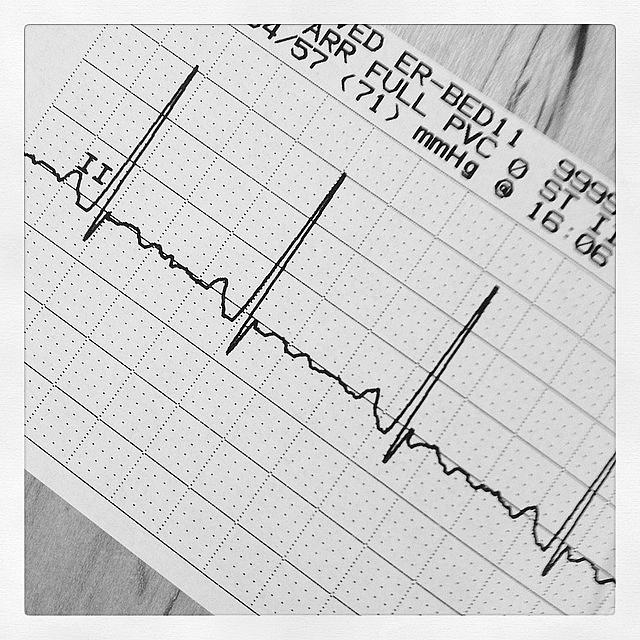Code Unknown: Mother presses doctors to take her symptoms seriously

PART TWO (Read part one here.)
Your heartbeat isn’t just boom-boom, boom-boom, boom-boom.
When recorded on an electrocardiogram (EKG), it registers as a series of five rapid waves, each of which has a corresponding letter: P, Q, R, S, and T.
When the distance between the Q and T waves is abnormally long, they call this a “long QT.” And it can be deadly.
It was July 2013, and Miranda Dyer was in Lakeland Regional Medical Center in Florida. She had been there a few months prior for a hysterectomy, and this time she had to be rushed back to the ER because her pulse had slowed to dangerous levels.
“My pulse had dropped so low that they put defibrillator pads on me in case my heart stopped,” Dyer said.
Miranda had undergone several EKGs in the past but it wasn’t until doctors gave her a new EKG that the odd pattern – the long QT – showed up.
And that’s the nature of the disorder. It doesn’t happen all the time, and so it can’t always be captured on an EKG.
Her physicians in Lakeland referred her to an electrophysiologist – a heart-rhythm specialist – in Tampa. He reviewed her tests and told her not to worry. An occasional problem with her heart’s rhythm was just that, occasional. In Dyer’s recollection, the doctor brushed her off, saying:
I have people with more problems than you have. When you feel yourself starting to get dizzy and the room starts spinning around you, just bear down and go to the floor. The biggest risk to your health is just hitting the wall on the way down when you fall.
Dyer left his office in tears.
She went home and told her husband that she was done looking for an answer to her health questions. She was just going to resign herself to dizzy spells and hope it was nothing more serious. But her husband told her to try one more doctor.
So in October 2013, she went to a different electrophysiologist, Dr. Neal Kavesh at the Watson Clinic in Lakeland. He was more concerned with what he saw in the EKG results.
He took some blood and had it sent for gene testing. Then he put her through a series of other tests.
They ruled out that her heart was malformed.
They ruled out that her heart was too large.
They ruled out that she was suffering from blocked arteries.
And then he said that he thought that the long QT that had been seen on her EKGs was not just an occasional problem unlikely to repeat. He said it was very likely a syndrome that would only get more dangerous as she aged. And he told her something she had not heard from anyone else: Her condition could be genetic.
That changed the game.
Photo by light_seeker via Flickr.
